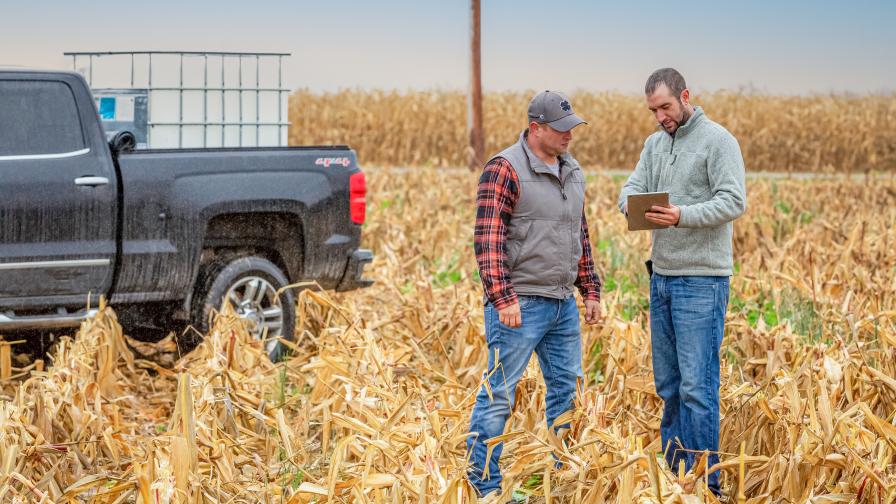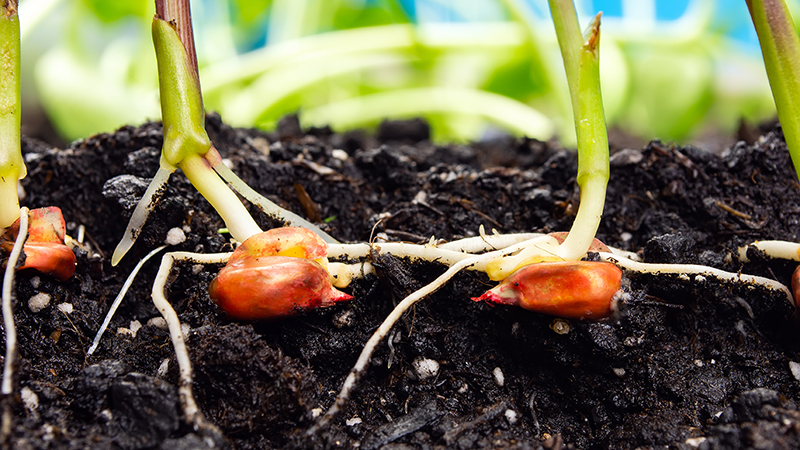A View from the Digital Crossroads: How Ag Retailers Can Lead in the Omnichannel Age

Growers are looking to do business in person, on the phone, and online — all while expecting the same level of service and value regardless of the multiple channels they choose to do business.
In recent years, consumers have embraced technology in almost every facet of their lives to create a more convenient, accessible and seamless experience. Similarly, when it comes to working with their ag retailers, growers’ expectations are changing. Easy mobile access to information and services 24/7 is quickly becoming the standard, and this trend has only been accelerated by COVID-19.
While some may think that the natural reaction to this increased adoption of digital services is launching a point-click-buy e-commerce solution, there is a larger opportunity at hand. One that builds on the value producers place on their strong personal relationships and adds the convenience of a digital experience. Growers are looking to do business in person, on the phone, and online — all while expecting the same level of service and value regardless of the multiple channels they choose to do business.
Insights from a 2019 McKinsey survey about growers’ digital preferences are proving even more true in 2020: “when it comes to [human interaction and digital] channels, farmers don’t want either — or; they want both —and.” Simply put, growers expect an omnichannel offering from their ag retailer.
Craig Patty, vice president sales & marketing for River Valley Cooperative, said it best: “As we prepare to meet the needs of the grower of tomorrow, we have to be a leader in digital tools today. Our grower/owners want access to tools that are fully integrated with our systems and that allow them to access information and conduct business with us 24/7. And, that demand will only increase.”
With the planning season upon us, nothing encapsulates the disjointed experience that growers and ag retailers feel more as when they are working on next year’s plans. On average, confirming a plan for one grower takes six unique touchpoints, including calls, texts, emails, and in-person visits by their ag retailer. The likelihood of mistakes and miscommunication increases when those touchpoints happen in different places or by different individuals.
Omnichannel Delivers Real Efficiency to Retail Teams and Their Customers
While we are eager to meet in-person once again, the accessibility and efficiency delivered to ag retailers and their customers by introducing a digital option is clear. In this season of planning alone, these six human-led touchpoints can be reduced to two. Agronomists can then prioritize their time to high-value services, such as addressing specific questions or offering subject-matter depth, with online channels supporting basic research and easy product ordering.
Consider this: ag retailers sit at the crossroads between input suppliers and the farm gate — and are uniquely positioned to deliver on a digital transformation that will bring value to growers.
Valley Ag recognized that their customers have many choices when it comes to buying their crop inputs and agronomy services and launched their Grower Portal in March. Said Connor Lankford, precision ag manager at Valley Ag: “We believe that by investing in technology that enables us to provide our customers access to relevant information and resources that are important to their operations and helps our agronomists provide a superior customer experience, we will be well positioned to be the company that growers choose to do business with now and in the future.”
After implementing a Grower Portal this year, one sales agronomist was able to reduce office work by more than 30%, which gave him more time to provide agronomic advice and support to his 74 grower customers. This example further supports McKinsey’s findings that growers want quick access to pricing and inventory information but trust the recommendations of those who understand their operations as well or better than they do.
The slower-than-predicted adoption of e-commerce reported in November can be attributed to dissatisfaction in the purely transactional nature of third-party e-commerce tools, than the perceived value of complementary digital experiences for growers. As purchasing power is handed down to younger digital natives and farm consolidation leads to more sophisticated operations, omnichannel solutions will become a critical component of an ag retailer’s business.
“We heard clearly from our farmer-owners that their business is evolving to take advantage of technology – it is our duty to match pace and be able to provide the convenience and flexibility their operations need in a digital fashion moving forward,” said KC Graner, senior vice president of agronomy at Central Farm Service (CFS), which launched its Grower Portal in October as part of their three-year strategy. “We recognize that the growers (and retailers) of tomorrow must capture every efficiency possible and communicate through every method available — digital tools are a huge part of accomplishing this.”
Over 55% of growers believe their experience working with their preferred retailer would be improved with the addition of a digital tool, according to a 2018 McKinsey study. That number is only increasing and innovative retailers with digital options are seeing the benefits. Retailers with AgVend-powered Grower Portals have found, on average, that more than 60% of their customers engage with their portal every month and often login multiple times.
Stepping Forward to Activate Your Digital Transformation
There are many options to implement a digital strategy, ranging from building it in-house, implementing a white-label solution, or partnering with an external provider. To determine the best approach, each retailer should consider available resources, expertise, time to market and fit within their long-term business plan.
To get started, here are four tips to help ag retailers lead their digital journey:
- Learn about the options available, the experience they provide, and what will work for you and your customers.
- Engage a diverse group — from agronomy to grain, from VP to admin — who represents the entire organization during the evaluation process.
- Assess a digital strategy by how it helps you better deliver on your core value proposition.
- Decide on a strategy and get in the game — the lessons learned today will fuel the iterations necessary to meet the evolving needs of your customer.
Legacy technology providers who could not deliver on promised timelines or failed to support retailers following technical implementation have left some weary of this digital transformation. However, leading retailers recognize the opportunity to improve their customer’s experience while delivering significant efficiencies across the organization. These are the companies who are ruthlessly executing on their digital strategy.
“A lot of companies, and not only in agribusiness, are talking and thinking about their digital strategies. Most of their questions revolve around ‘how/who/when/where’ and a very few are thinking about ‘why,’ which becomes the critical path to success,” said Igor Buchatskiy, managing partner at BGlobal Capital.
As the digital crossroads comes into full view and the ease of doing business remains critical for growers and their trusted advisors, the question becomes why not.
Properly implemented omnichannel solutions can unlock real efficiencies throughout an ag retail organization while ensuring that they are prepared to meet the needs of growers in the future. The time to step forward starts now.






